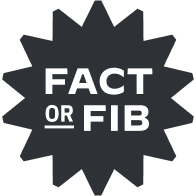Why "paper" money isn't really paper
Thursday, January 18, 2024
 Make every day more interesting. Each day a surprising fact opens a world of fascinating information for you to explore. Did you know that….?
Make every day more interesting. Each day a surprising fact opens a world of fascinating information for you to explore. Did you know that….? 









| Original photo by Resource Database/ Unsplash+ |
| U.S. "paper" money is actually 75% cotton and 25% linen. | Cabbage. Scratch. Dough. Americans have used many creative nicknames for dollar bills over the past two centuries, though one of the more technical terms — "paper money'' — could be considered just as misleading. Turns out, U.S. dollars are made not from paper, but instead from a fiber blend of 75% cotton and 25% linen. This water-resistant, durable material can hold up to far more wear and tear than actual wood-pulp paper could. While a dollar can be torn with intentional force, it would take an estimated 4,000 repetitive folds in the same spot to cause a tear. American dollars also include red and blue synthetic fibers, which are woven into the material and included to make counterfeiting more difficult.
Despite its strength, no dollar bill lasts forever. The Federal Reserve generally allows cash to continue circulating regardless of age, so long as it's in great shape — free from tears, holes, and writing, and still legible. However, all bills have an expected life span based on denomination. Smaller bills typically see more frequent use and wear out faster, with $5 bills having the shortest life at just 4.7 years and $1 notes lasting around 6.6 years. After being removed from circulation, threadbare bills are shredded and move on to a new purpose: 90% of destroyed dollars are used to make potting soil, compost, and construction materials like cement.
|
|
 | | U.S. dollar bills have always been green. | | |
|
|
| U.S. dollar bills have always been green. |  |  |
|
|
|
|
|
| Cramps, Headaches, Sleeplessness? Your Electrolyte Fix Might Be Missing | | Even though the weather is colder, it's important to remember to stay hydrated — and LMNT is here to help. LMNT is an electrolyte drink that keeps you refreshed and hydrated, no matter where your day takes you. LMNT is made with real ingredients — including sodium, potassium, and magnesium — and comes in a variety of refreshing flavors, so you're sure to find one you love. As an Interesting Facts reader, you'll get a FREE 8-count Sample Pack with any purchase when you order today. |
|
|
|
| Early U.S. pennies used the motto "Mind Your Business," a phrase popularized by __. |  |
|
|
 | Numbers Don't Lie |
|
 | | Denominations available in U.S. paper currency | | 7 |
|
|  | | U.S. states in the "Cotton Belt," stretching from coast to coast | | 17 |
|
|
|
 | | Number of $100 bills that can be made from one bale of cotton | | 313,600 |
|
|  | | Estimated number of $2 bills still in circulation | | 1.4 billion |
|
|
|
|
|
 | No living person can have their picture printed on U.S. currency. |
|
| The portraits on U.S. currency have traditionally depicted the country's Presidents and founding leaders, though at one time an employee of the federal government put his own face on a paper bill. Spencer Clark served as the superintendent of the National Currency Bureau during the 1860s, a time when the U.S. Treasury temporarily printed paper bills for small denominations under $1 during a coin shortage. Historians are unsure exactly how Clark's face wound up on the 5-cent note, though one possible explanation is that the bill was supposed to feature William Clark, half of the famous Lewis and Clark exploring duo. However, an alleged miscommunication led Spencer Clark to instead authorize his own image to be printed. Congress was outraged — especially considering Clark's poor reputation, stemming from prior accusations of fraud and unprofessional conduct — and moved to ensure no other person could commit a similar act. In 1866, Congress passed a law that allows only deceased people to appear on the country's currency. | | |
|
|
|
| Thank you for supporting our advertisers. They help keep Interesting Facts free! |
|
|


posted by June Lesley at 5:45 AM


![]()
![]()
![]()
![]()
0 Comments:
Post a Comment
<< Home